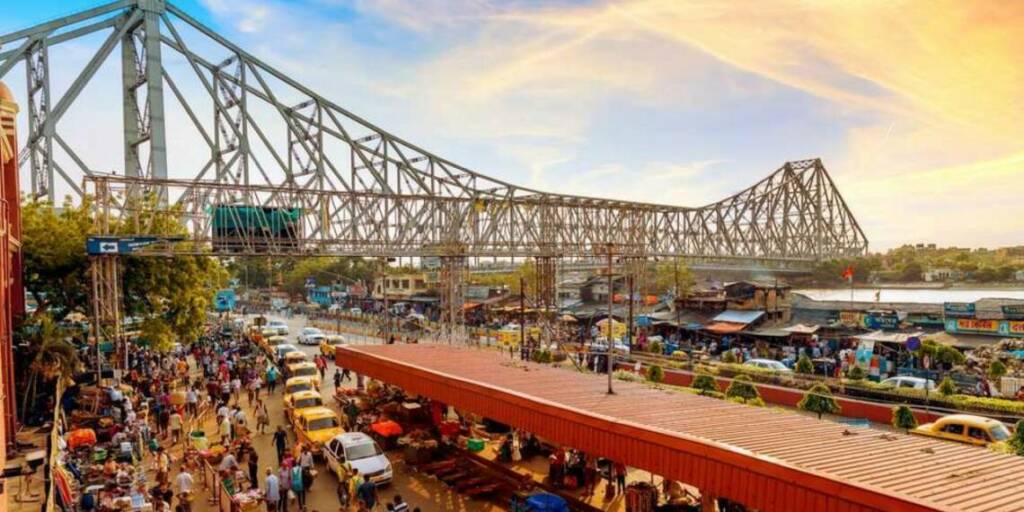People often say that nostalgia is not a good thing because it prevents one from moving on. But nostalgia is perhaps good for a city like Kolkata because it could learn so much from its past glory which was ruined by successive Left Front and Trinamool Congress (TMC) governments, while Delhi, Chennai and Mumbai grew at its cost.
In June 2018, then BJP president Amit Shah, in a speech in West Bengal, had said that the state’s share in the nation’s GDP was 25 per cent at the time of independence and now it is at a mere four per cent.
So the question is, who is to be blamed for this destruction of the economy of West Bengal? The prevailing socio-economic policies at the national and international level or the incompetent governments of the state? Unfortunately, both of these factors contributed to turning one of the richest cities in the country into one of the poorest.
Kolkata, the mightiest city in the east, was the economic hub of India till the 1960s when it started losing prominence to Mumbai. The important point to note here is that despite Calcutta (now Kolkata) was an industrial hub in the pre-independence period and the early years of independence, the industries were largely owned by Marwaris and Gujaratis. Some of these businessmen had been operating in Bengal since the Mughal period.
When the Communist regime started harassing these Gujarati and Marwari businessmen, most of them migrated to other cities of the country like Delhi and Mumbai. With its main entrepreneurial base gone, the economic decline of Kolkata began.
The state government banned the use of English till class VI in public schools while the children of Communist leaders studied in private English medium schools. The Communist government’s disdain for capital and industry forced many businesses out of Kolkata and restricted the entry of new businesses.
The status of economic and service sector hub enjoyed by cities like Pune and Hyderabad – thanks to the English education – could have been that of Kolkata if a good government has been in power. Almost four decades ago, Kolkata enjoyed the status of the economic capital of India which is now enjoyed by Mumbai. If a government that respects capitalism and rule of law had been elected in the state, Kolkata could have retained the status.
However, with the decline of West Bengal’s economy, the middle-class Bengalis started moving out of the city in search of opportunities. The Bengali professionals with very familiar surnames could be found at top management positions of almost all large companies. However, while Bengalis across the other Indian cities thrived, Kolkata remained poor and badly governed.
Today, thousands of middle-class Bengalis could have been seen working across information technology, media and entertainment, and other corporate sectors as professionals in West Bengal. The state has an abundance of ‘skilled human capital’ due to the introduction of modern education very early as compared to other regions of the country.
But the modern service industries like information technology, automobile, banking, and finance firms did not prefer West Bengal over other states due to the apathy of the Left Front government towards the capital city of Kolkata. Rigid labour laws, graft, and trade unionism were other factors that kept these sectors away from cities of West Bengal, more specifically, Kolkata.
As one can see in the above table, Kolkata was India’s largest urban agglomeration in 1950. This was due to the economic opportunities the city had to offer, ambitious and talented people from across the country migrated to Kolkata for better living conditions. But Kolkata lost its status to Mumbai by the 1990s and moved to the second place. It was followed by Delhi which appeared in the 15th position on the list.
At the time of independence, Kolkata was among the most productive cities in the country. But, as per a report by PwC, Mumbai will hold the tenth position among the cities in terms of GDP (Purchasing Power Parity) by 2025 with 594 billion dollars and Delhi will be in the 19th position with 482 billion dollars while Kolkata does not even appear on the list.
Delhi was not even among the top 30 cities at the time of independence but by 2007, the city was in third place. And, it is expected that in 2025, Mumbai and Delhi will be the second and third largest cities on the globe in terms of the population while Kolkata will be displaced to the eighth position.
Kolkata keeps dipping down in comparison to Delhi and Mumbai is because it no longer offers economic opportunities to people and therefore people no longer move to the city. In fact, middle-class citizens of the city migrate to other cities to look for better opportunities and a better life.
Kolkata is more of a large slum instead of being a metropolitan city and only a shift in regime can help the city return back to its former glory. If BJP comes to power come May 2, the process of rejuvenation of the city shall begin. East India and the city of Kolkata shall regain their rightful place after a new government takes oath, as promised by Union Home Minister Amit Shah more than two years ago.
